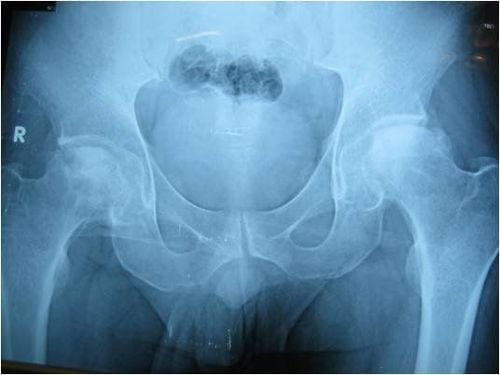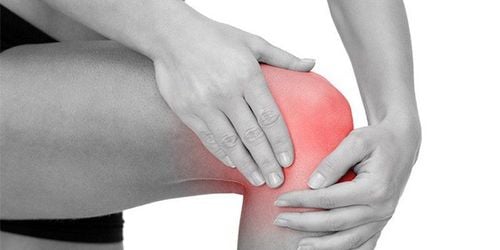This is an automatically translated article.
Posted by Doctor CCII. Khong Tien Dat - Department of Diagnostic Imaging - Vinmec Ha Long International Hospital.
Magnetic Resonance Imaging (MRI) is considered one of the revolutionary inventions in medical engineering. Magnetic resonance imaging of the hip joint has a wide range of applications and is safe and does not cause radiation to the patient.
1. What is magnetic resonance imaging?
Magnetic resonance imaging (MRI) is one of the modern imaging techniques in medicine that uses magnetic fields and radio waves. Magnetic resonance imaging (MRI) technique produces high-contrast images with good anatomical detail, allowing accurate detection of morphological and structural lesions of the parts of the body being examined. In particular, the ability to reproduce 3D images well, with no side effects, is increasingly widely specified for many different specialized applications.
2. Magnetic resonance imaging of the hip joint
Hip joint is a joint with complex structure and function, joint-related diseases include trauma, bone damage, joint necrosis, arthritis, osteoarthritis, tumor... There are many imaging surveys for hip diseases. Radiographs are usually the first indication. Computed tomography is valuable for detailed evaluation of bone and cortical structures, but magnetic resonance imaging of the hip has a particularly important role in evaluating the soft structures that make up the hip such as: capsule. , articular cartilage, muscles involved in hip movement, bone marrow....
Magnetic resonance of hip joint is indicated for the following diseases:
Necrosis of femoral head Cartilage damage in hip osteoarthritis Fracture difficult to detect on radiographs Bone tumors: Both benign and cancerous bone tumors Bone marrow injury Arthritis and bursitis Injury to bone and periarticular soft tissue Nerve compression

3. Some common hip diseases when taking magnetic resonance imaging
3.1 Aseptic necrosis of the femoral head More common in adults, in men, in clinical settings such as after trauma, long-term steroid use, alcoholism, obesity, pancreatitis...
Magnetic resonance imaging of the hip is currently the best technique to reveal lesions in this pathology, which can manifest at a very early stage when clinical symptoms are not typical. Common images are changes in bone marrow in the crest, subsidence of articular cartilage, subsidence of bone, loss of articular cartilage, collapse, deformity of femoral head ...
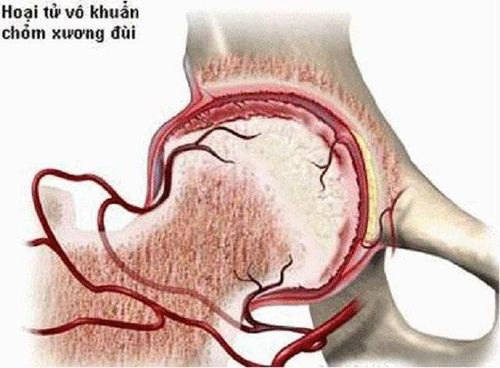
3.2 Osteoarthritis is a disease common in middle-aged and elderly people with degenerative joint manifestations including: Pain, limited mobility, limited movements of the hip joint such as contraction, flexion, flexion, adduction, internal rotation, etc. external rotation;
Magnetic resonance of the hip joint clearly reveals the lesions in this pathology such as: Joint space stenosis, subchondral bone fibrosis, bone spurs, cyst formation, joint effusion...
3.3 Infective hip arthritis Hip joint can experiencing infections, germs can be transmitted through the bloodstream, adjacent inflammatory foci or damage directly penetrate into the hip joint ... causing damage to bones, cartilage, bursitis, surrounding soft
Magnetic resonance is a technique that should be chosen for early detection, revealing damage clearly, and assessing its relevance to surrounding components.
3.4 Fracture in the hip area Appears after an impact injury to the hip, thigh area. Magnetic resonance allows better assessment of fracture lines that are difficult to detect on X-ray, fractures with less displacement, and additional evaluation of possible complications such as necrosis of the femoral head, nerve compression...
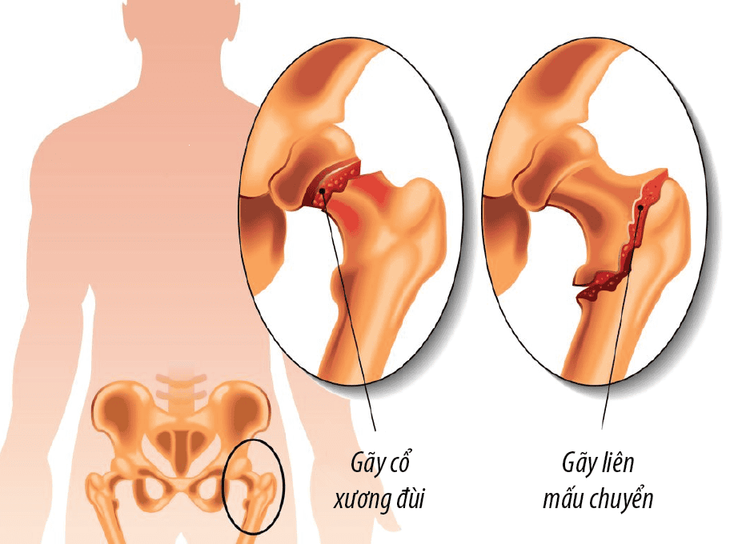
3.5 Primary hip osteoarthritis (Legg - Calve - Perthes) is a disease in children, usually at the age of 4-7, predominate in men. The disease is characterized by pain in the hip joint that is not caused by trauma, the child limps due to the pain, and it is increasingly difficult to walk.
Magnetic resonance imaging of the hip helps to evaluate morphological and signal changes at an early stage when X-ray has not yet shown.
3.6 Hip Dysplasia Common in children. Meet more women than men. Meet on both sides about 33%. Risk factors include: family history, breech birth, scoliosis, periarticular structural abnormalities. Signs depend on the patient's age: In infants, one leg is longer than the other, in older children one hip is less flexible or a limp, In adolescents or young adults , the first signs that may be noticed are hip pain or a limp.
Magnetic resonance imaging of the hip joint evaluates this pathology well, as it clearly reveals the shape of the meniscus, allowing to determine the position of the femoral head, in relation to the acetabulum better. Magnetic resonance also showed associated complications such as ischemic necrosis, joint effusion...
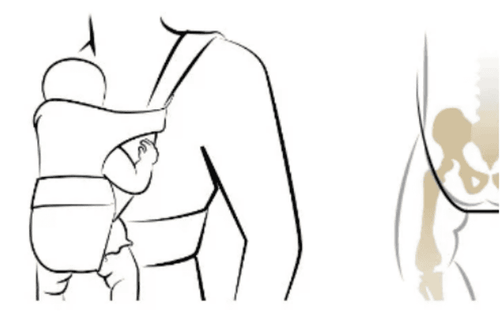
3.7 Slip of the head on the femur (dislocation of the hip) As a childhood disease, risk factors include: Obesity, trauma, endocrine abnormalities... The visual presentation is posterior-underhead displacement. on the femur.
Magnetic resonance allows to evaluate the shape of articular cartilage, growth cartilage, displacement of the upper femoral head, the relationship of the femoral head with the acetabulum, related complications such as head necrosis.
3.8 Fracture of the meniscus Commonly after trauma. The normal parietal cartilage is triangular in shape. The hallmark of a parietal meniscus tear is increased signal in the meniscus or persistent loss of cartilage. Magnetic resonance imaging of the hip is by far the best imaging technique to reveal this lesion.
4. Procedure for magnetic resonance imaging of the hip joint
MRI is a non-invasive imaging tool, so it generally does not harm the patient's body. However, before performing magnetic resonance imaging of the hip joint, it is necessary to screen the patient without violating the contraindications, namely:
Patients with cardiovascular devices permanently placed in the body such as pacemakers. , defibrillators, artificial heart valves ... or have metal fragments, metal implants in the body such as shrapnel, blood vessel clips, hearing aids, automatic drug injection devices under the skin. .. People with the psychological syndrome of fear of closed spaces. People with severe obesity, size or body weight are too large to fit the cage. Patients do not need to fast, can change into simple clothes, do not bring anything on their body and arrange to lie neatly on the plane of the machine, slowly put into the imaging cage.
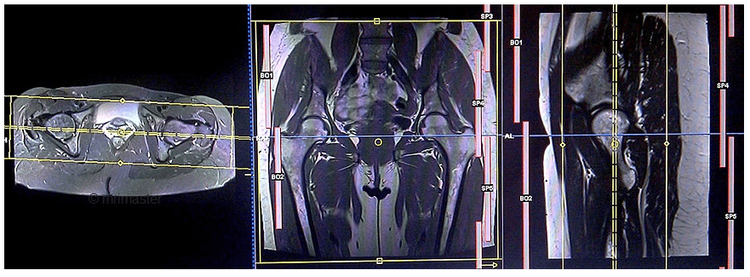
Meanwhile, the patient can use headphones, both to reduce noise and as a means of communication with the outside technician; At the same time, helping the patient to relax mentally. After ensuring the quality of the hip image to be collected meets the technical requirements, the lying plane is removed from the imaging cage and the patient can sit up and fully function as usual. However, there should be a room to monitor the patient for 15 minutes before leaving, in order to avoid abnormal reactions and manifestations, and to be able to receive timely support and intervention.
Magnetic resonance imaging (MRI) of the hip is a technique that requires advanced medical equipment along with a team of highly qualified and experienced doctors. Therefore, to receive the best diagnosis and treatment, you should choose the top medical centers in our country. Currently, the Department of Diagnostic Imaging is one of the spearheads of Vinmec International Hospital, which is equipped with the most modern and advanced equipment in the country as well as in the region. The department has 6 ultrasound rooms, 4 DR X-ray rooms (1 full-axis machine, 1 brightener, 1 synthesizer and 1 mammography machine), 2 DR mobile X-ray machines, 2 cutting rooms. multi-row computer class with receiver (1 128-series and 1 16-series), 2 Magnetic Resonance imaging rooms (1 3 Tesla machine and 1 1.5 Tesla machine), 1 interventional angiography room with 2 planes and 1 room measure bone mineral density. The doctors at the Faculty are well trained at home and abroad. Especially when coming to Vinmec International General Hospital, patients do not need to wait long, have a quick examination time, and are carefully guided by a team of experienced medical staff on the use of medicines and instructions. Lead positive lifestyle changes so that patients can easily adhere to their treatment management.
Please dial HOTLINE for more information or register for an appointment HERE. Download MyVinmec app to make appointments faster and to manage your bookings easily.





